|
72° Stormo
|
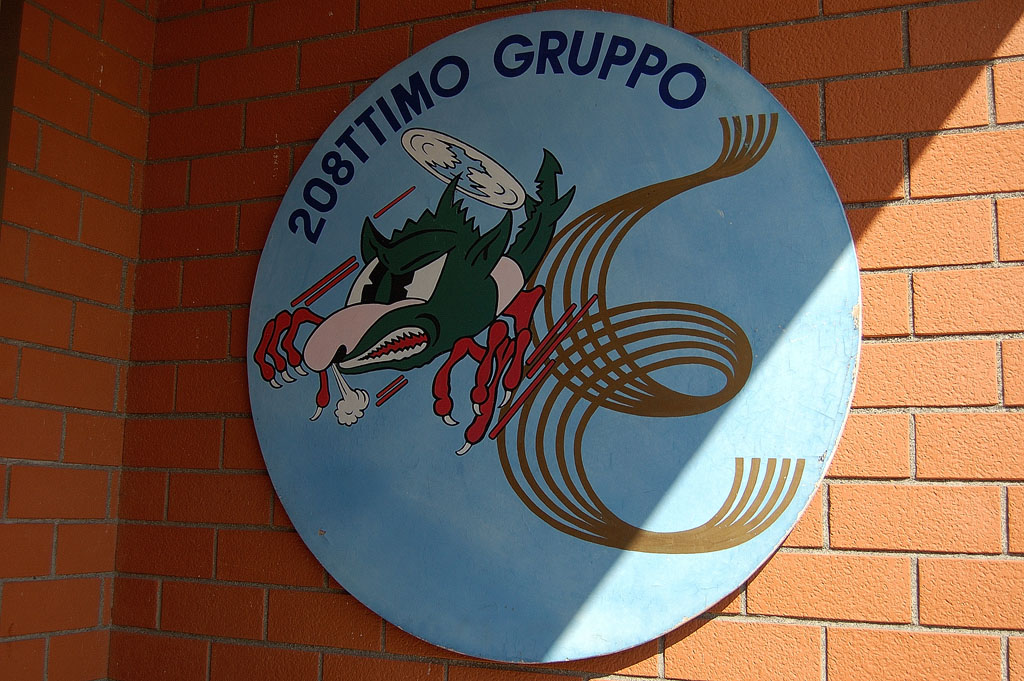 |
|
Il Comandante del 208° Gruppo
Il Maggiore Giuseppe Colucci è l’attuale Comandante del 208ottimo Gruppo, nato il 20 novembre del 1969 a Ostuni (Br). Si è laureato in scienze militari presso l’Accademia Militare frequentando il corso Leone IV, entrato in Aeronautica Militare nel 1989 ha conseguito il brevetto di pilota militare negli Stati Uniti, al suo attivo conta più di 3.400 ore di volo ai comandi di SF 260, T 37, T 38, NH 500, HH 3F e A 109.
Dal 1995 al 1998 ha prestato servizio al 15° Stormo presso il distaccamento del 84° Gruppo SAR di Brindisi, ricoprendo ruoli di primo piano come Capo Nucleo voli e statistiche, Comandante della 140^ e 287^ Squadriglia, nel 2000 approda al 72° Stormo dove ricopre ruoli sia nel 208° Gruppo che nel 72° Stormo, nel settembre del 2007 passa da Capo Ufficio Operazioni a Comandante di Gruppo.
Nella sua carriera a partecipato ad importanti esercitazioni come Eolo 1998 in Francia, oppure a corsi didattici tipo Helicopter Accident Investigation (Usa), NATO Joint Service E.W. Officers (Germania) e molti altri in territorio nazionale.
|
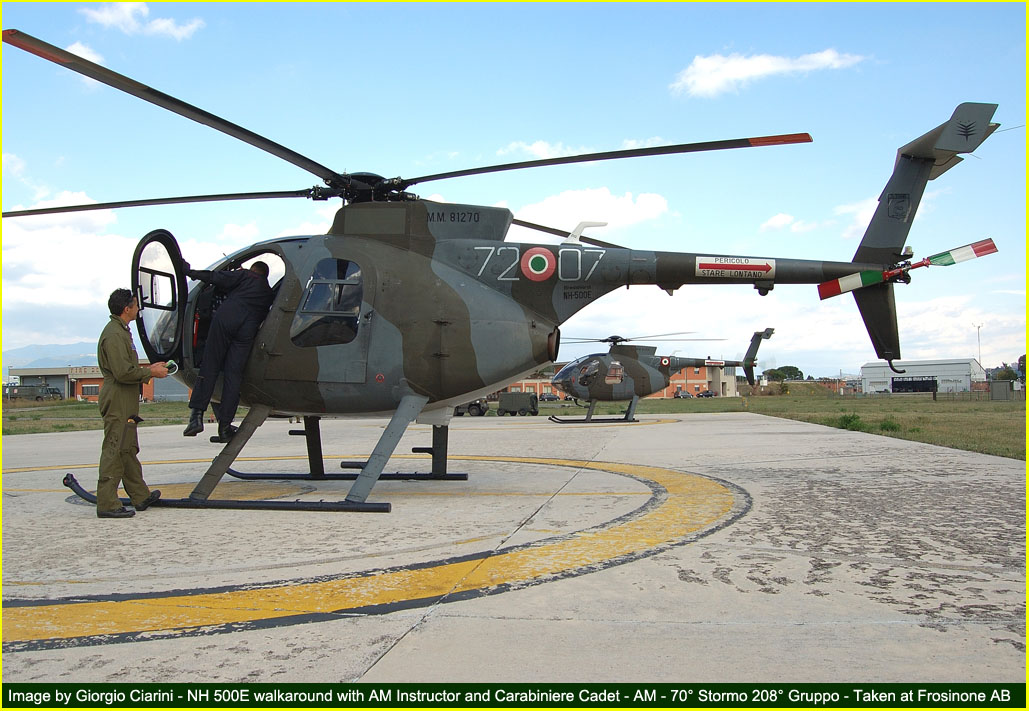 |
Per descrivere un Gruppo di Volo e/o una Scuola di Volo si possono scrivere tante cose ma invece partirei con due dati che si commentano da soli, 4.363 piloti brevettati e 418.286 ore volate dal 1960 ad oggi, questa è la storia del lavoro svolto dalla scuola intitolata al Serg. De Salvia, scuola che per decenni ha insegnato, come al giovane Sergente, a volare a migliaia di giovani allievi.
Lo scopo principale del 208° Gruppo di Volo, oppure 208ottimo, come da stemma rigorosamente presente su tutte le tute di volo, e dei suoi istruttori è quello di formare e istruire i futuri piloti di Elicotteri, compito apparentemente semplice se non si entra nel concetto che la scuola di Frosinone con le sue strutture è l’unico ente in Italia preposto a questo compito, quindi da sotto le ali, anzi da sotto il rotore, escono con le modalità che vedremo descritte nelle prossime righe tutti i futuri piloti Militari e tutti i futuri piloti degli Enti di Stato italiani, e non solo perché questa possibilità di imparare a volare sugli Elicotteri è aperta anche a paesi stranieri.
Lo Stormo effettua questa attività di addestramento con Istruttori di provenienza esclusivamente dell’Aeronautica Militare, piloti istruttori che dopo aver conseguito il Brevetto di Pilota Militare presso il 61° Stormo di Lecce o le scuole estere (USA/Canada), hanno effettuato la conversione operativa sugli elicotteri del 72° Stormo, una volta conseguito il “passaggio macchina” vengono assegnati a reparti operativi su HH 3F o AB 212, molti di questi piloti tornano successivamente a Frosinone per istruire i loro futuri colleghi. Essi generalmente rimangono presso la Scuola per almeno tre/quattro anni ma sono molti i casi in cui rimangono per un tempo più prolungato.
I piloti in forza al 208° Gruppo oltre a svolgere la mansione primaria di Istruttore effettuano missioni di addestramento per assolvere i compiti istituzionali a loro assegnati e inoltre svolgono missioni di Cross Country molto impegnative sotto l’aspetto dell’organizzazione, pianificare un volo in Elicottero che per esempio prevede il sorvolo di montagne come le Alpi necessità di una gestione di missione particolare che non prevede il normale passaggio nelle aerovie usate dagli erei, questo fatto di forza maggiore esiste in quanto come molti sanno che il 90% degli Elicotteri non hanno la tangenza adeguata per passarci sopra; ma per esempio come descrittoci dal nostro gentile interlocutore, in occasione di un volo Cross Country verso la zona di Berlino in Germania, la gestione della missione prevedeva il passaggio nei canaloni del Trentino Alto Adige, ovviamente ad altezze tali da non arrecare disturbo alle popolazioni locali, sfruttando la stessa morfologia del terreno usata per far passare l’autostrada del Brennero. Altra situazione di uguale difficoltà è il sorvolo di lunghe tratte di mare dove per forza di cose serve l’ausilio di elicotteri HH 3F (in grado di flottare sul mare) che “scortano” i loro “colleghi" fino alla terra ferma e/o isola di destinazione. |
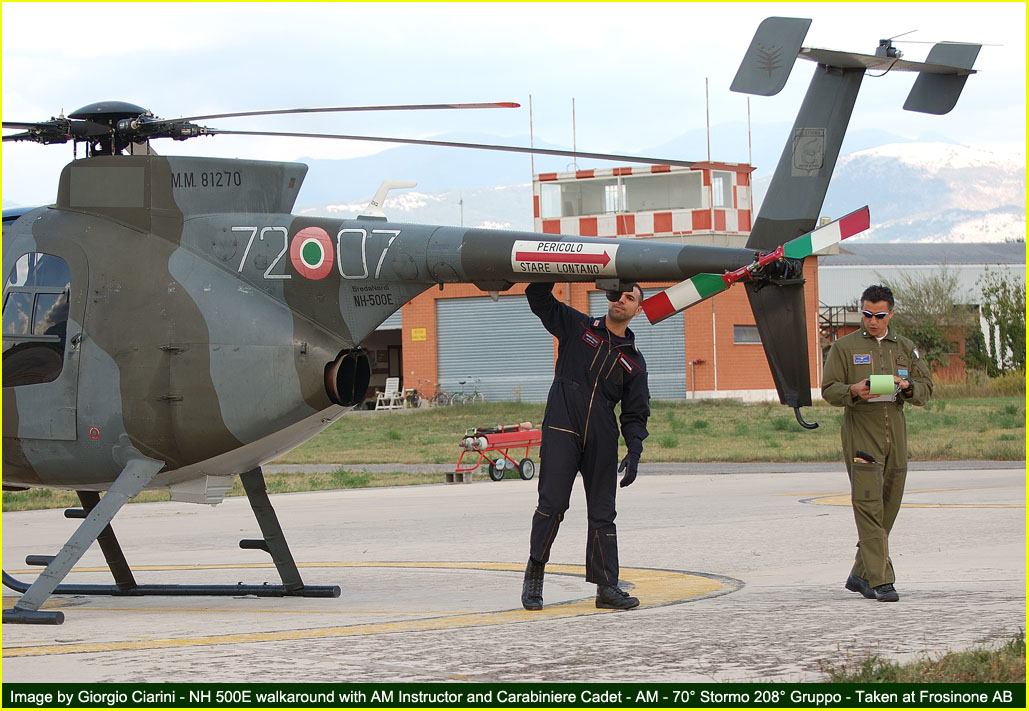 |
Ora vediamo le varie modalità con cui si diventa pilota di elicottero; la modalità cambia in base alla provenienza (Forza Armata, o Corpo Armato e non dello Stato) a cui appartiene il pilota.
La scuola come abbiamo detto prima fornisce istruzione diversificata in base alla provenienza degli allievi; ai frequentatori che provengono dall’Aeronautica Militare, dalla Marina Militare e dalle Capitanerie di Porto, viene rilasciata un’abilitazione, in termini più tecnici “passaggio macchina”, abilitazione concessa esclusivamente a quei piloti che hanno già il brevetto di Pilota Militare; brevetto quest’ultimo che si ottiene frequentando la scuola di Latina presso il 70° Stormo su velivoli ad ala fissa. Il corso previsto per abilitazione su elicottero dura sette mesi, di cui un mese di istruzione teorica più sei mesi di attività di volo per un totale di 77 ore di volo.
Poi ci sono dei veri e propri corsi per ottenere il brevetto di volo, due sono le tipologie primo brevetto che andiamo ad esaminare è denominato BPME (Brevetto Pilota Militare per Elicottero), viene rilasciato dopo un corso di nove mesi, con un mese e mezzo di istruzione teorica più sei mesi e mezzo di attività pratica associate a 90 ore di volo. A questo corso accedono i piloti, dell’Esercito italiano, dei Carabinieri e infine della Guardia di Finanza. Il secondo Brevetto che prendiamo in esame è denominato BPE (Brevetto Pilota Elicottero) ed è ad uso esclusivo di Enti di Stato non militari come la Polizia di Stato, i Vigili del Fuoco ed il Corpo Forestale dello Stato, cambia la denominazione ma la durata e le modalità del corso sono simili al corso per BPME.
Inoltre come abbiamo già accennato in precedenza ci sono corsi basici di pilotaggio per piloti stranieri, nel 2007-2008 hanno partecipato alle attività propedeutiche allievi provenienti da Albania Malta ed Afghanistan. Per il prossimo futuro sono state prese in considerazione dallo Stato Maggiore Aeronautica richieste provenienti dal altri paesi.
Inoltre lo Stormo organizza corsi tecnici di manutenzione per Sottoufficiali e corsi per qualificazione per Istruttori ed Esaminatori.
L’addestramento è basato su due tipologie ben distinte di attività, pratica e teorica, l’attività pratica avviene grazie agli istruttori del 208° Gruppo di Volo che con i loro elicotteri NH 500E sono la parte fondamentale della buona riuscita dell’addestramento. Per quanto riguarda l’attività teorica vale la pena soffermarci su un sistema di insegnamento sviluppato qui a Frosinone e descrittoci da uno dei principali fautori, il Maresciallo Scacchi, a volte l’istruzione teorica può sembrare semplice e superflua ma non è così perché comporta un onere sia economico che strutturale enorme, così è stato sviluppato il Gruppo Istruzione Professionale INSIAU. |
 |
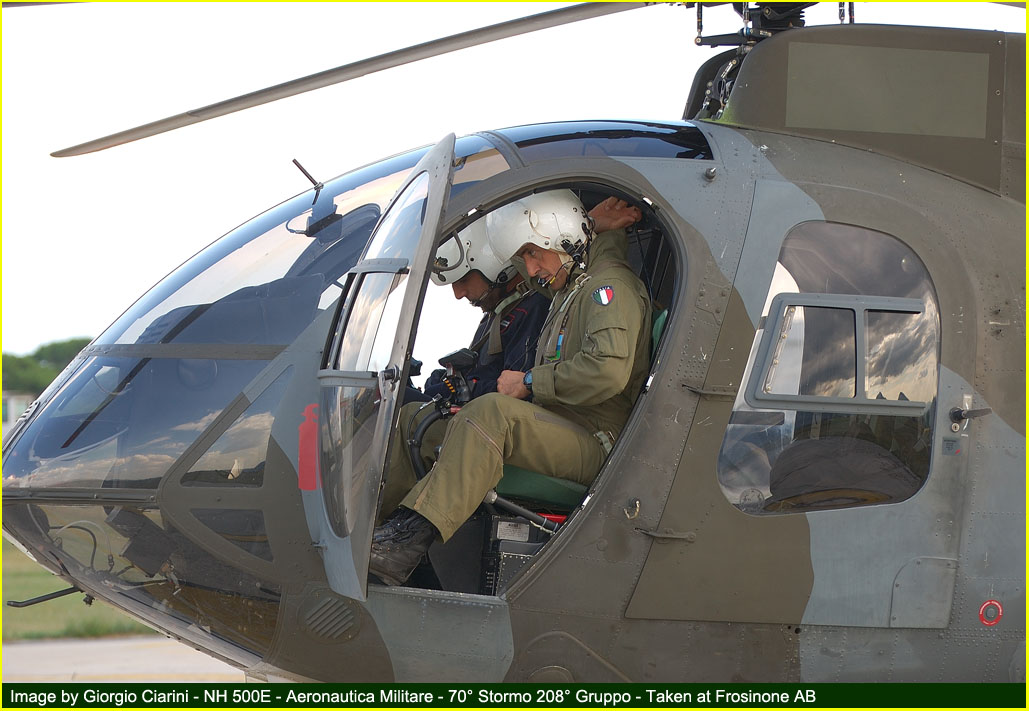 |
 |
Dal 1997, presso l’aula INSIAU, sede dell’omonimo sistema didattico multimediale, si svolge la fase teorica a terra propedeutica per la successiva fase addestrativa in volo, necessarie per il conseguimento dell’abilitazione al pilotaggio dell’elicottero NH500E o del Brevetto Militare di Pilota di Elicottero. Tramite i 25 PC “postazione allievo” sui quali è installato un software didattico appositamente realizzato, i frequentatori svolgono un ciclo intensivo di addestramento fruendo nell’arco di 3/7 settimane, in base alla tipologia cui appartengono, 14 materie teoriche per un totale di oltre 200 lezioni ad elevato contenuto multimediale (filmati, animazioni, audio, immagini ecc.) che costituiranno il background culturale indispensabile alla prosecuzione del loro iter addestrativo.
Il docente, tramite il PC “postazione insegnante”, supervisiona lo svolgimento delle lezioni,
controlla il raggiungimento degli obiettivi formativi attraverso diverse tipologie di test di verifica e, laddove ritenga opportuno, interviene personalmente per approfondimenti e chiarimenti, il tutto impiegando i diversi dispositivi hardware e software messi a disposizione dal sistema.
Tra il 2007 e il 2008, il sistema didattico multimediale INSIAU, è stato oggetto di un profondo rinnovamento tecnologico sia dal punto di vista software che dal punto di vista hardware. Infatti, dopo un intenso lavoro di modifica, impiegando esclusivamente personale militare dello Stormo, il sistema è stato “migrato” sulla piattaforma didattica E-Learning Moodle già utilizzata dall’Università La Sapienza, da diversi enti della Pubblica Amministrazione e dalla stessa Aeronautica Militare, mantenendo i preziosi contenuti didattici ben collaudati.
Questo ha prodotto numerosi vantaggi, primo fra tutti, la possibilità di eseguire le lezioni tramite un Web browser quindi non solo su una rete locale ma anche e soprattutto attraverso Internet. Grazie a questo, è nato il cosiddetto progetto INSIAU E-Learning che si prefigge l’obiettivo di permettere al frequentatore di svolgere della maggior parte della fase teorica via Internet, rimanendo presso il proprio ente di appartenenza, con un conseguente congruo risparmio economico. L’INSIAU E-Learning è già oggi una realtà essendo in questi giorni in uso per i frequentatori del 46° / 47° Corso Propedeutico Ala Rotante, altra tipologia di iter addestrativo assegnato al Gruppo Efficienza Aeromobili dello Stormo, inerente il settore dell’Efficienza Linea Aeromobili.
Inoltre, ancora nell’ambito del suddetto rinnovamento tecnologico, ai frequentatori viene oggi data la possibilità di accedere alle loro lezioni anche dopo il normale orario di servizio per garantire continuità e disponibilità didattica. Questo è possibile grazie all’installazione presso i loro alloggi di una rete V-Lan Wireless tramite la quale, utilizzando un Notebook fornito dallo Stormo, possono collegarsi al Web Server dell’aula 24 ore su 24. |
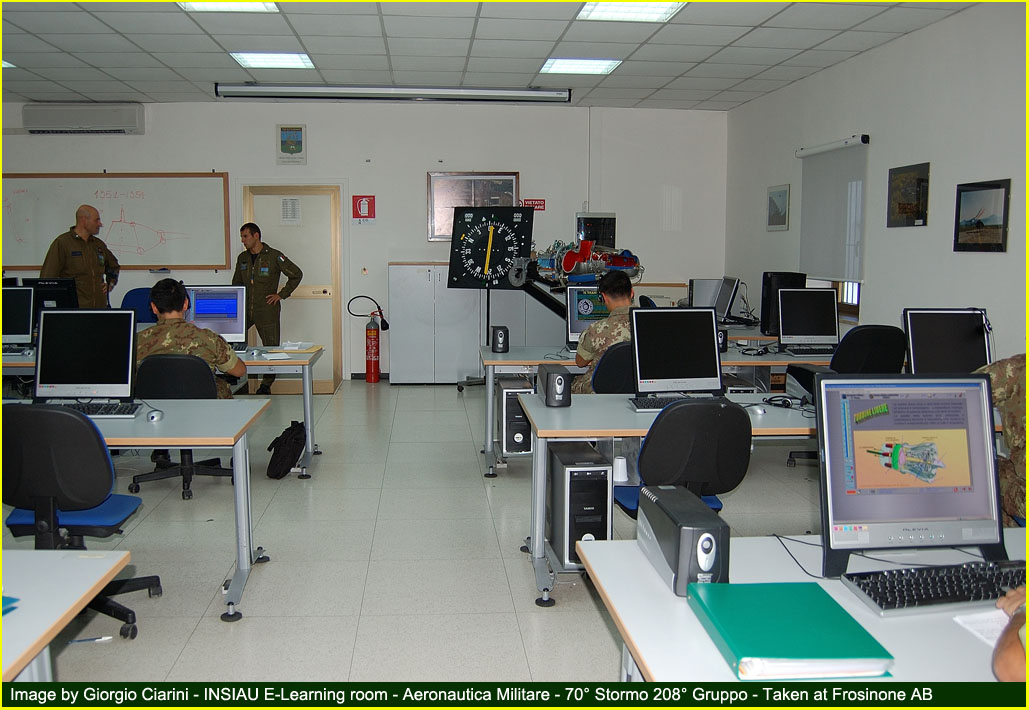 |
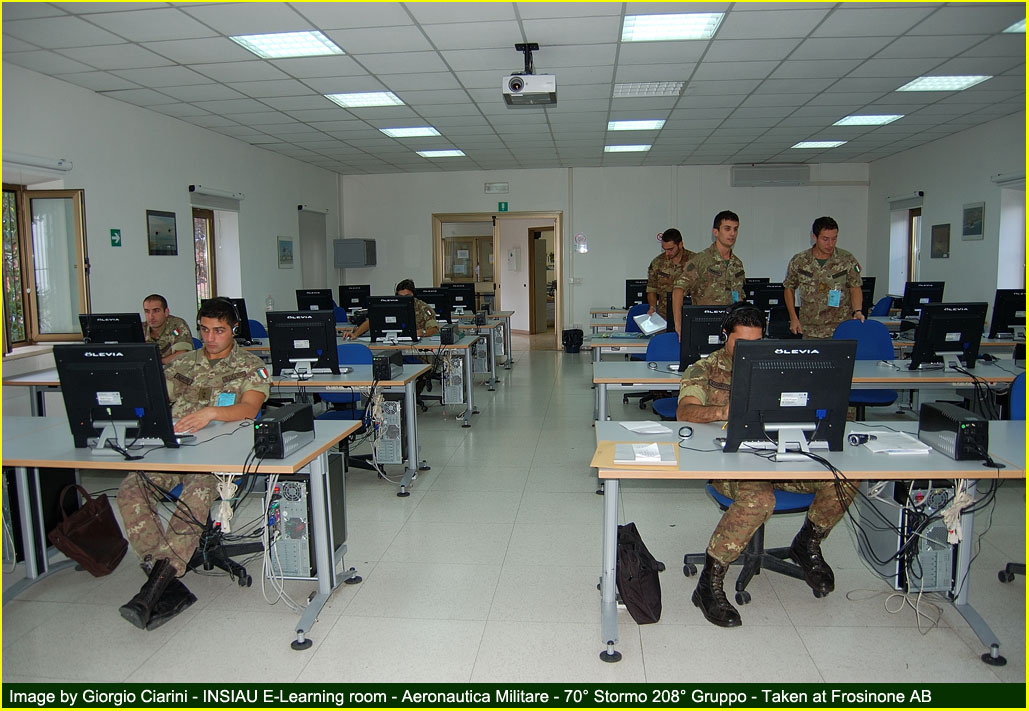 |
|
English translation
The Cmdr. Maggiore Colucci
Major Giuseppe Colucci is the present commander of the “208ottimo” Gruppo. Born on 20 November 1969 at Ostuni (BR), he gained a degree in military science at the Accademia Militare, passing out from the “Leone IV” course. Entering active service with the Aeronautica Militare in 1989, he gained his military pilots’ wings in the United States, and at the time of our visit he had recorded more than 3,400 flying hours at the controls of the SF 260, T 37, T 38, NH 500, HH 3F and A 109.
Between 1995 and 1998 he saw service with the 15°Stormo, detached to the 84° Gruppo SAR at Brindisi, performing the initial role of Capo Nucleo voli e statistiche (Head of the flying element and statistics), and later Comandante of the 140ª and 287^ Squadriglia. In 2000 he was posted to the 72° Stormo, undertaking roles in both the 208° Gruppo and the 72° Stormo: in September 2007 he moved from Capo Ufficio Operazioni (Chief of the Operations Office) to Comandante di Gruppo (Gruppo Commander).
During his career he has participated in several important exercises, such as “Eolo 1998” in France, as well as advanced training courses, including Helicopter Accident Investigation (USA), NATO Joint Service E.W. Officers (Germany), and many other in Italian territory.
The Gruppo di Volo - Training
To describe a Gruppo di Volo and/or a Flying School is to describe many things, but a starting point should perhaps be two significant figures which speak for themselves, 4,363 pilots qualified and 418,286 flown from 1960 to date. This is the story of the work performed by the school named after Sergente De Salvia, a school which for decades has taught, like it did the young Sergeant, thousands of young cadets to fly.
The principal role of the 208° Gruppo di Volo, or the 208ottimo (208excellent) as the unit’s badge proudly states on all the flying suits using a play on words, and its instructors is that of preparing and instructing future helicopter pilots, and apparently simple task if it was not for the concept that the Frosinone school and its structures is the only organisation in Italy dedicated to this task, and so, from under its wings, or perhaps, under its rotors, emerge all the future Piloti Militari and future Piloti of the Italian state corps. Moreover, these pilots are not alone, as the possibility to train on helicopters at the Italian school is open to students from foreign nations.
The Stormo performs this training activity with instructors drawn exclusively from the ranks of the Aeronautica Militare, instructor pilots who, having gained their Brevetto di Pilota Militare with the 61° Stormo at Lecce or foreign schools (USA/Canada), have completed operational conversion onto the helicopters of the 72° Stormo, and on completion of their type conversion been posted to operational units flying HH 3F or AB 212. Many of these pilots subsequently return to Frosinone to instruct their future colleagues. Generally they remain at the school for at least three or four years, but in many cases their posting is further extended.
Besides performing their primary duties as instructors, the pilots assigned to the 208° Gruppo conduct training missions to practice the other institutional roles assigned to the unit, and also perform highly demanding “Cross Country” missions. These involve the organisation and planning of a helicopter flight which, for example, involves the transit across mountains such as the Alps, which requires specialised mission management. Clearly, helicopters do not possess the service ceiling that would enable them to cross the Alps using the normal Airways used by aircraft. Our guide described how, for example, on the occasion of a “Cross Country” mission to the Berlin area in Germany, the mission management required a transit through the valleys of Trentino Alto Adige, obviously at altitudes that offer minimum disturbance to the local population, and exploiting the same terrain profiles as used by the Brennero motorway. Another situation of equal difficulty would be the transit across long stretches of open sea, which requires the use of an HH-3F escort helicopter (well capable of floating on the open sea), which accompanies their smaller colleagues until they reach terra firma or the destination island.
Turning to the various processes by which a student is turned into a helicopter pilot, it must be stated that the methods vary depending on the service (armed service, state corps, or foreign nation) from which the student comes.
The Stormo, as we have stated provides syllabi based on the provenance of the students; those posted in from the Aeronautica Militare, Marina Militare or Capitanerie di Porto, are trained up to the granting of a qualification, more technically known as a “type conversion”, which is exclusively connected to those pilots who have already gained their Pilota Militare; the latter is obtained by passing out of the Latina-based 70° Stormo after fixed-wing training. The standard rotary conversion course is planned to last some seven months, of which one month is taken up with theoretical studies, the remaining six being flying training, involving some 77 flying hours.
There are two distinct courses leading to the granting of the helicopter pilots’ wings. The first we will examine is designated BPME Brevetto Pilota Militare per Elicottero, the Military Helicopter Pilots Qualification, which is issued after classroom training and six and a half months of practical training with 90 flying hours. This course is followed by pilots of the Aeronautica, Esercito Italiano, Carabinieri, and finally the Guardia di Finanza. The second qualification is called the BPE - Brevetto Pilota Elicottero – and it is awarded exclusively to pilots from paramilitary services such as the Polizia di Stato, Vigili del Fuoco and Corpo Forestale dello Stato: the denomination is different, but the course content is identical to the BPME syllabus.
Furthermore, as has already been reported, there are basic helicopter training courses for foreign students, and in 2007-2008 the unit saw students from Albania, Malta, and Afghanistan participating in the training. The Stato Maggiore Aeronautica is at present considering requests from other nations for places on future training courses.
In addition, the 72° Stormo organises technical maintenance course for NCO engineers, and qualification courses for Instructors and Examiners.
In general, the training is based on two distinct types of activity: practical and theoretical. Practical activity is conducted thanks to the instructors of the 208° Gruppo di Volo, who, with their NH 500E helicopters are fundamental to the positive outcome of the training. In respect of the theoretical activities, it is worth examining the system of training developed in house at Frosinone and explained to us by one of its principal creators Maresciallo Scacchi. On occasions, theoretical training can appear to be simple and superfluous, but this is not correct, as it carries an enormous economic and structural cost, and so to respond to the requirement the Gruppo Istruzione Professionale INSIAU was established.
Since 1997, in the INSIAU centre, home of the similarly named multi-medial training system, the ground-based theoretical segment of the courses have been performed, conducted prior to the subsequent flight- training phase, both of which are essential to the award of pilots’ wings on the NH500E or the Brevetto Militare di Pilota di Elicottero. Through the 25 PC “student workstations”, on which specifically designed training software is installed, the students undergo an intense training cycle spanning an arc of three to seven weeks, dependent on the type of course, with 14 individual subjects studied over more than 200 lessons. These have a high multimedia content (films, animations, audio, imagery etc) which constitutes the indispensable cultural background to the prosecution of the training programme.
The instructor, using the instructor’s PC workstation, supervises the conduct of the lessons, controlling the attainment of the training goals through various types of testing and, where appropriate, personally intervenes to offer clarification or more in-depth explanations, always using the various software and hardware systems available through the system.
Between 2007 and 2008, the multimedia INSIAU training system was subjected to a profound technological upgrade in terms of both software and hardware. In fact, following the intensive modification work, exclusively involving military personnel from the Stormo, the system was migrated to an E-Learning Module already utilised by the La Sapienza Università, several public administration agencies, and the Aeronautica Militare, maintaining the well-tried and precious training content. This has delivered numerous advantages, the prime example being the ability to conduct lessons through a Web browser, and thus not only on a local intranet but also, and in the main, on the Internet. Thanks to this, the so-called INSIAU E-Learning was created, which established the objective of allowing the student to perform the major part of the theoretical training over the internet, remaining with his or her unit, and thus bringing as a consequence notable economic benefits. INSIAU E-Learning is already today a reality, and is being used by the students of the 46°/47° Corso Propedeutico Ala Rotante. Other parts of the syllabus are assigned to the Gruppo Efficienza Aeromobili of the Stormo, mainly in the first-line servicing sector.
Moreover, again in the light of technological renewal, the students today have the ability to access their lessons outside the normal hours of service thanks to guaranteed training continuity and availability. This is possible thanks to the installation in their quarters of a V-Lan Wireless network with which, utilising a Notebook provided by the Stormo, they can connect to the classroom Web Server 24 hours out of 24.
|
|